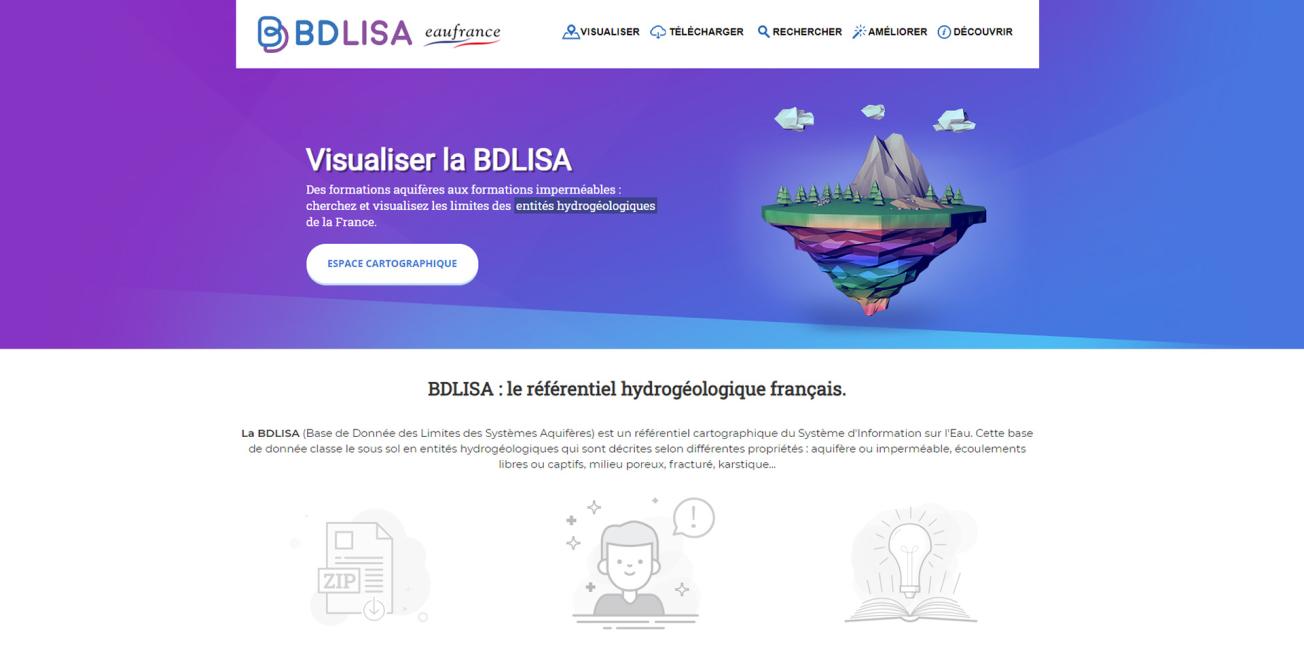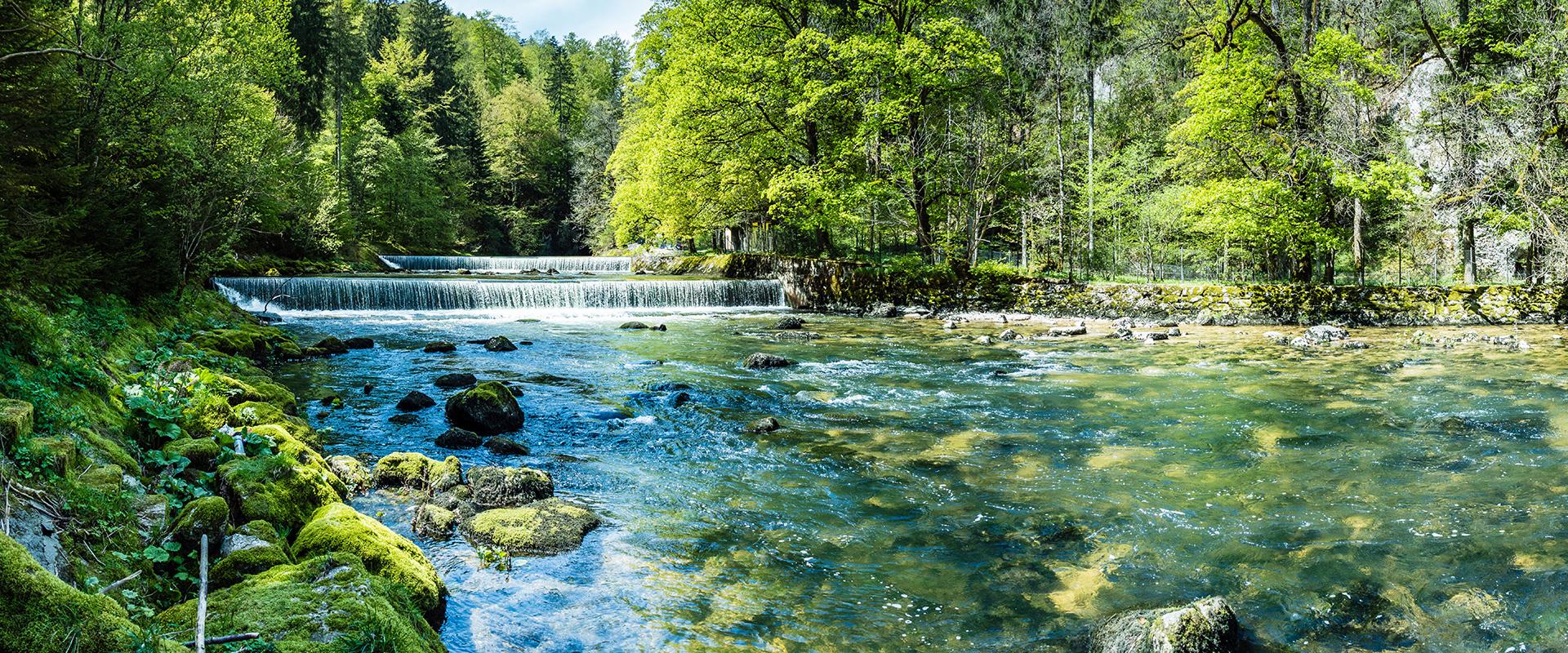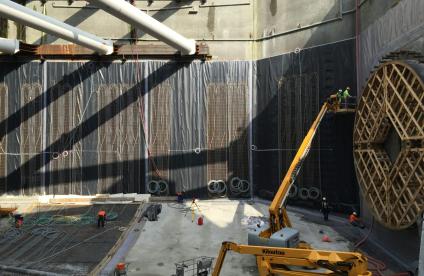
Homepage of the new dedicated website for the BDLISA database.
© BRGM
The BDLISA hydrogeological database (Base de Données des LImites des Systèmes Aquifères) was set up to provide access to maps of hydrogeological entities throughout mainland and overseas France. In recent years, the BRGM played a major role in its initial construction and subsequently its consolidation.
Version 2 has now been published, just over two years after the release of version 1. A website dedicated to BDLISA was released at the same time.
More than 600 modifications to the dataset
Thanks to user feedback, Version 2 incorporates over 600 modifications (in attributes and/or geometry) to the first version's dataset.
More specific improvements were also made and some new features have been introduced into the dataset, including an entirely overhauled thematic layer on Karstic zones, a new thematic layer on loose alterites in the bedrock domain and maps of the hydrogeological entities in Mayotte.
A new dedicated website for access to the BDLISA database
A further important innovation is a dedicated website for access to the BDLISA database, now available online. This gives users access to a map section, and enables them to download the full BDLISA database in different formats and at different scales and to upload requests for modifications to the database.
Substantial BRGM contributions to the construction of BDLISA
The BRGM began its work on BDLISA in 2006 in close collaboration with the water agencies and offices, the relevant devolved government agencies (DREAL, DRIEE for the Greater Paris region, DEAL for Overseas France), local government agencies, research organisations and engineering consultancies.
The BRGM was commissioned to build up the reference database and to consolidate its contents at the national scale, as required by the national plan for data on water (SNDE). The project was funded by the Ministry for the Ecological and Inclusive Transition, the French Biodiversity Agency, the Water Agencies and the BRGM.







